
The Deobandi movement or Deobandism is a revivalist movement within Sunni Islam that adheres to the Hanafi school of law. It formed in the late 19th century around the Darul Uloom Madrassa in Deoband, India, from which the name derives, by Muhammad Qasim Nanautavi, Rashid Ahmad Gangohi, and several others, after the Indian Rebellion of 1857–58. They consider themselves the continuation of Ahlus Sunnah wal Jamaat. The main purpose of this movement was to reject the grave worshipping, shirk and protect the orthodoxy of Islam from Bidah, as well as the influence of non-Muslim cultures on the Muslim of South Asia. The movement pioneered education in religious sciences through the Dars-i-Nizami associated with the Lucknow-based ulema of Firangi Mahal with the goal of preserving traditional Islamic teachings from the influx of modernist, secular ideas during British colonial rule. The Deobandi movement's Indian clerical wing, Jamiat Ulema-e-Hind, was founded in 1919 and played a major role in the Indian independence movement through its participation in the Pan-Islamist Khalifat movement and propagation of the doctrine of composite nationalism. The movement shares several similarities with Wahhabism.

Darul Uloom Deoband is an Islamic seminary in India at which the Deobandi movement began. It was established by the Indian Muslim theologians in the wake of the failure of War of Independence 1857 which had caused the abolition of Mughal Empire and politico-economic predicament of the South Asian Muslims. It aimed at reforming and uplifting the Muslim society on orthodox lines, and preserving the Muslim culture from the influence of modernism, Christian and Hindu missionary activities. It is located in Deoband, a town in Saharanpur district, Uttar Pradesh.
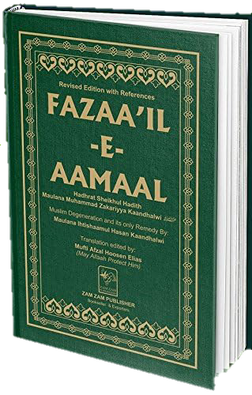
Fazail-e-Amaal, authored by Zakariyya Kandhlawi between 1929 and 1964, is a book that primarily consists of treatises from the Fada'il series, originally published in Urdu. Its purpose is to inspire and motivate Muslims in their religious practices by presenting a diverse range of Islamic teachings, stories, and anecdotes. The book's popularity has led to translations in multiple languages, including English and French, establishing it as a major resource for the Tablighi Jamaat, a transnational pietistic movement. Written at the request of Ilyas Kandhlawi, the founder of Tablighi Jamaat, the book was initially named Tablighi Nisab or Curriculum for Tabligh. It is the most popular ongoing publication of Urdu literature in the present era and is extensively read due to its inclusion in the literature of the Tablighi Jamaat. The book's language is appreciated for its simplicity, clarity, and accessibility to readers.
Ashraf Ali Thanwi (often referred as Hakimul Ummat and Mujaddidul Millat was a late-nineteenth and twentieth-century Sunni scholar, jurist, thinker, reformist and the revival of classical Sufi thought from Indian subcontinent during the British Raj, one of the chief proponents of Pakistan Movement. He was a central figure of Islamic spiritual, intellectual and religious life in South Asia and continues to be highly influential today. As a prolific author, he completed over a thousand works including Bayan Ul Quran and Bahishti Zewar. He graduated from Darul Uloom Deoband in 1883 and moved to Kanpur, then Thana Bhawan to direct the Khanqah-i-Imdadiyah, where he resided until the end of his life. His training in Quran, Hadith, Fiqh studies and Sufism qualified him to become a leading Sunni authority among the scholars of Deoband. His teaching mixes Sunni orthodoxy, Islamic elements of belief and the patriarchal structure of the society. He offered a sketch of a Muslim community that is collective, patriarchal, hierarchical and compassion-based.

Mahmud Hasan Deobandi was an Indian Muslim scholar and an activist of the Indian independence movement, who co-founded the Jamia Millia Islamia university and launched the Silk Letter Movement for the freedom of India. He was the first student to study at the Darul Uloom Deoband seminary. His teachers included Muhammad Qasim Nanautawi and Mahmud Deobandi, and he was authorized in Sufism by Imdadullah Muhajir Makki and Rashid Ahmad Gangohi.
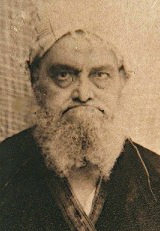
Zakariyya Kandhlawi was a mid-twentieth-century traditionalist Sunni scholar and an authority in the study of hadith, also known as Sheikh al-Hadith, hailing from India. He was an influential member and ideologist of Tablighi Jamaat and the author of the Fada'il series, which is a crucial propagation literature for the movement. Born into a family deeply rooted in Tablighi Jamaat and associated with the Deobandi movement, he studied under Mazahir Uloom and eventually became a teacher there in 1917, retiring over half a century later in 1968. Engaging with Sufism, a distinctive feature of the mainstream Indian Ulama, he was a student of Khalil Ahmad Saharanpuri in both hadith and spirituality. Together, they embarked on a ten-year journey to compile Badhl al-Majhud, an explanatory work on Sunan Abu Dawood. Initially published in five volumes, he expanded it to a twenty-volume collection. He made his first trip to Medina with Saharanpuri at a young age, and in 1972, he settled in Medina and continued his missionary work from there until his death. He was buried next to his teacher Saharanpuri at Al-Baqi Cemetery, whose successor he had been named. During his initial stay in Medina, he began working on a commentary on Muwatta Imam Malik, eventually publishing Awjaz al-Masalik over a thirty-year period. This work quickly earned him a reputation for his expertise in interpreting the Maliki tradition. The first edition, published in six volumes in India, was followed by a fifteen-volume second edition, with the first three volumes printed in Cairo and the remaining volumes in Beirut.
Ml Cassim Mohammed Sema was a South African Sunni Muslim scholar who established the first madrasa in South Africa and possibly the first madrasa that uses English as its medium of instruction. He was the founder of Darul Uloom Newcastle.
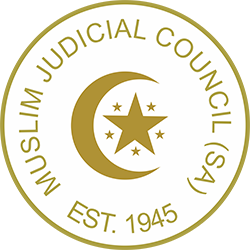
The Muslim Judicial Council SA (MJC), a non-profit umbrella body of Sunni Islamic clerics in South Africa, is headquartered in Cape Town, South Africa. It was established in 1945 by the Muslim Progressive Society. As of 2009, approximately 150 mosques were affiliated with it.

Mazahir Uloom is an Islamic seminary located in Saharanpur, Uttar Pradesh. Started in November 1866 by Sa'ādat Ali Faqīh, and developed further by Mazhar Nanautawi and Ahmad Ali Saharanpuri; it is regarded as the second most influential and major Deobandi seminary in India. The earliest graduates of the seminary include famous Hadīth scholar Khalil Ahmad Saharanpuri. In 1983, the seminary split into two with the establishment of Mazahir Uloom Jadeed as a new independent seminary. Since then the seminary has been named as Mazahir Uloom Waqf Qadeem.

Muhammad Ibrahim Siddiqui was an Indian Barelvi Islamic scholar who was born in West Bengal and died in Mauritius. He was particularly influential in Mauritius, where he founded the Sunni Razvi Society.
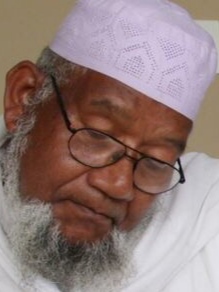
Yusuf Karaan was a South African Sunni Muslim scholar from Strand who served as head mufti of Muslim Judicial Council.
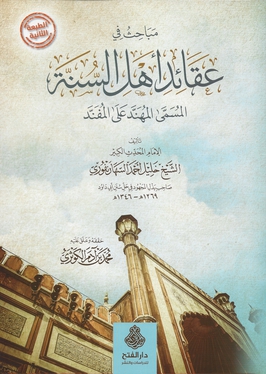
Al-Muhannad 'ala al-Mufannad, also known as al-Tasdiqat li-Daf' al-Talbisat, was subsequently published in Urdu as 'Aqa'id 'Ulama' Ahl al-Sunna Deoband is a book that expresses some of the beliefs held by the Sunni Hanafi Deobandis. It was authored by the Indian Hanafi-Maturidi hadith scholar and Sufi master Khalil Ahmad al-Saharanpuri in 1907, who wrote a commentary on Sunan Abi Dawud, entitled Badhl al-Majhud.
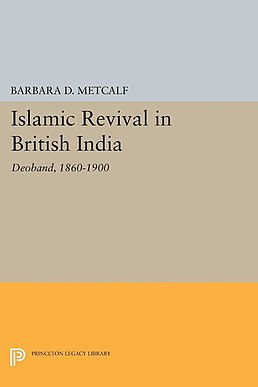
Islamic Revival in British India: Deoband, 1860-1900 is a scholarly work authored by Barbara D. Metcalf, a professor at the University of California. Originally, this book emerged as a revised edition of her doctoral dissertation and was published in 1982 under the auspices of Princeton University Press. At its core, the book delves into the Deobandi movement during its formative phase, representing the first major monograph dedicated to the institutional and intellectual history of this movement. It endeavors to shed light on the transformative journey undertaken by Islamic scholars, commencing in the 18th century. This journey was catalyzed by the challenges faced by Indian Islam in the aftermath of the 1857 Mutiny, prompting a diverse array of approaches for resolution. In her scholarly pursuit, the author gathered pertinent materials in Urdu to offer a precise depiction of Deoband's organizational structure. The book opens with a detailed exploration of the landscape of 18th-century Islamic reform movements. Subsequently, it dedicates four detailed chapters to provide an in-depth and reader-friendly account of the establishment, administration, financial intricacies, and the education and training of young scholars at the Deoband seminary. The work engages in a critical examination of various styles of religious leadership, delving into the multifaceted roles of muftis, shaikhs, writers, and debaters, often with an unwavering focus on details. A dedicated chapter is set aside for a profound exploration of the social milieu within which the Deobandi ulama operated. Furthermore, the book navigates through alternative trends within Sunni Islam, including the Ahl-i Hadith, the Barelwis, the Nadwatul Ulama, and Deoband's rival, Aligarh. It seeks to position Deoband within a historical context and accentuate its unique attributes when compared to other institutions of Indian Muslim erudition and the tapestry of various religious movements.

This bibliography of Deobandi Movement is a selected list of generally available scholarly resources related to Deobandi Movement, a revivalist movement within Sunni Islam, adhering to the Hanafi school of law, formed in the late 19th century around the Darul Uloom Deoband in British India, from which the name derives, by Qasim Nanawtawi, Rashid Ahmad Gangohi and several others, after the Indian Rebellion of 1857–58. It is one of the most influential reform movements in modern Islam. Islamic Revival in British India by Barbara D. Metcalf was the first major monograph specifically devoted to the institutional and intellectual history of this movement. Muhammad Tayyib Qasmi wrote a book named The Tradition of the Scholars of Deoband: Maslak Ulama-i-Deoband, a primary source on the contours of Deobandi ideology. In this work, he tried to project Deoband as an ideology of moderation that is a composite of various knowledge traditions in Islam. This list will include Books and theses written on Deobandi Movement and articles published about this movement in various journals, newspapers, encyclopedias, seminars, websites etc. in APA style. Only bibliography related to Deobandi Movement will be included here, for Darul Uloom Deoband, see Bibliography of Darul Uloom Deoband.
Darul Uloom Newcastle is a college for Higher Islamic Education, located in Newcastle, KwaZulu-Natal, South Africa. It was the first formal institution of higher Islamic studies in South Africa, as well as the first Deobandi madrasa in South Africa. It was founded by Cassim Sema in 1973. It is called the mother of all Darul Ulooms in South Africa. Although only Hanafi fiqh is taught in such institutions in the Indian subcontinent, it also offers both Hanafi and Shafi'i fiqh.

Darul Uloom Deoband was established in 1866 in the Saharanpur district of Uttar Pradesh, India, as part of the anti-British movement. It gave rise to a traditional conservative Sunni movement known as the Deobandi movement. The Deobandi Movement has an international presence today, with its full-fledged manifestation in South Africa, a country where the movement was initiated through the Indian Gujarati merchant class. The Islamic education system of the Deobandi movement, as well as the necessary components of social and political organizations such as Tablighi Jamaat, Sufism and Jamiat, are fully functioning effectively in South Africa, as they do in India. Madrasas in South Africa provide Islamic higher education and are now centers for Islamic education for foreigners who are interested in receiving a Deobandi-style education. Many of their graduates, especially from Western countries such as the United Kingdom and the United States, are Western students. Some of South African madrasas are recognized globally, providing fatwa services. South Africa is now known for producing exceptional Islamic literature through translation and compilation. Similarly, the Tabligh Jamaat is a hub in South Africa that spreads throughout South and East Africa. Graduates of South African madrassas spend their time in the path of the Tabligh Jamaat. Through the work of several spiritual personalities of the Deobandis, the tradition of Deoband's Tasawwuf (Sufism) has taken root in South Africa. Among them are Zakariyya Kandhlawi, Masihullah Khan, Mahmood Hasan Gangohi and Asad Madani. South African Deobandi Muslims have many important and influential educational and socio-political organizations that educate the people and play an important role in religious and social activities. Among them are Jamiatul Ulama South Africa and the Muslim Judicial Council.

Darul Uloom Deoband was established in 1866 in the Saharanpur district of Uttar Pradesh, India, as part of the anti-British movement. It gave rise to a traditional conservative Sunni movement known as the Deobandi movement. Students from various regions, including Sistan and Baluchestan in Iran, attended Deoband, which led to the spread of its founders ideas. This movement had a significant impact on some of the new generation of Iranian intellectuals in the late 19th and early 20th centuries. After entering Iran, the students of this madrasa continued to expand this thinking and with the formation of missionary groups. These thoughts have been strengthened on one hand due to the cultural relationships between the Baloch tribes and on the other hand due to the connection of Sistan and Baluchestan's Iran and India's Hanafi religious leaders in Iran. Today, the Deobandi movement is one of the intellectual currents in Sistan and Baluchestan and preaching groups are active in different cities and villages. Its playing a crucial role in Iran's political landscape. The Deobandis aimed to homogenize religious schools and were opposed to certain popular practices.The Naqshbandi order played an important role in the Deobandi school of thought in the Persian-speaking world.

Deobandi fiqh is a school of Islamic jurisprudence that is based on the Hanafi school of Islamic law. It is associated with the Deobandi movement, which originated in India in the late 19th century and has since spread to other parts of the world, particularly in South Asia. Deobandi fiqh emphasizes a strict adherence to the Quran and the Sunnah, and seeks to ensure that all aspects of daily life are guided by Islamic law. It places a strong emphasis on the principles of fiqh, or Islamic jurisprudence, and is known for its strict interpretation of Islamic law. It also emphasizes the importance of Islamic ethics and morality, and emphasizes the need for Muslims to lead a pious and virtuous life. Deobandi fiqh has had a significant influence on Islamic education and scholarship, particularly in South Asia and among the global South Asian diaspora. It plays a foundational role in the judiciary of Afghanistan. It has also been associated with various Islamic political movements and has been a subject of controversy and debate within the Muslim community.
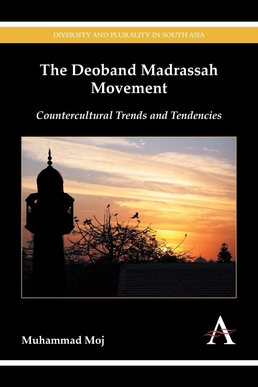
The Deoband Madrassah Movement: Countercultural Trends and Tendencies is a book authored by Muhammad Moj, a research fellow at the University of Western Australia, that aims to examine the Deobandi movement from a counter-cultural perspective, with a particular focus on its impact in Pakistan. The book comprises six chapters, providing insights that challenge conventional views of madrasas as centers of learning and socialization. Zeeshan Chaudri, a PhD scholar at SOAS University of London, commented on the book, expressing concerns about its research methodology and the potential bias in portraying the Deobandis as an intolerant faction in South Asia.











